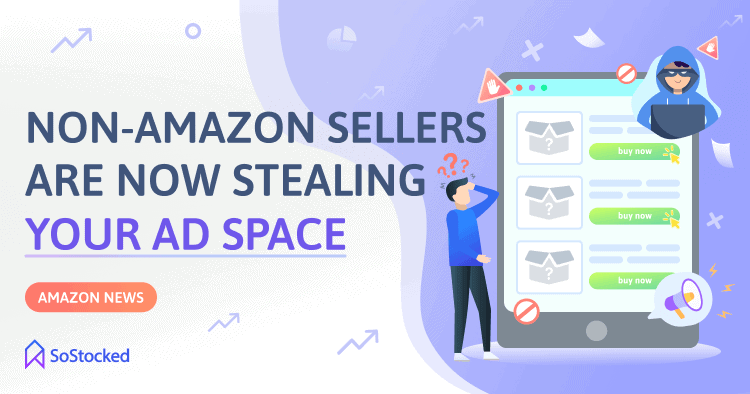
Non-Amazon Sellers Are Now Stealing Your Ad Space
Amazon continues to beef up its Buy with Prime business with more marketing capabilities to help non-Amazon sellers drive traffic and increase sales on their own stores. 📈
Buy Ads to Drive More Shoppers to Off-Amazon Stores
The tech giant launched Buy with Prime in April 2022 to allow direct-to-consumer (DTC) brands off Amazon.com to offer free 1 to 2-day shipping, an easy checkout process, and free returns to customers. They do this by becoming these brands’ fulfillment centers. FBA essentially becomes available to non-AMZ sellers.
That’s right. While you get saddled with restock limits and reduced FBA warehouse space, Mr. Shopify Only seller snuggles up in your spot. 🤔
Participating brands feature a Buy with Prime button on their sites to provide shoppers with a seamless buying experience via Amazon payments and fulfillment.
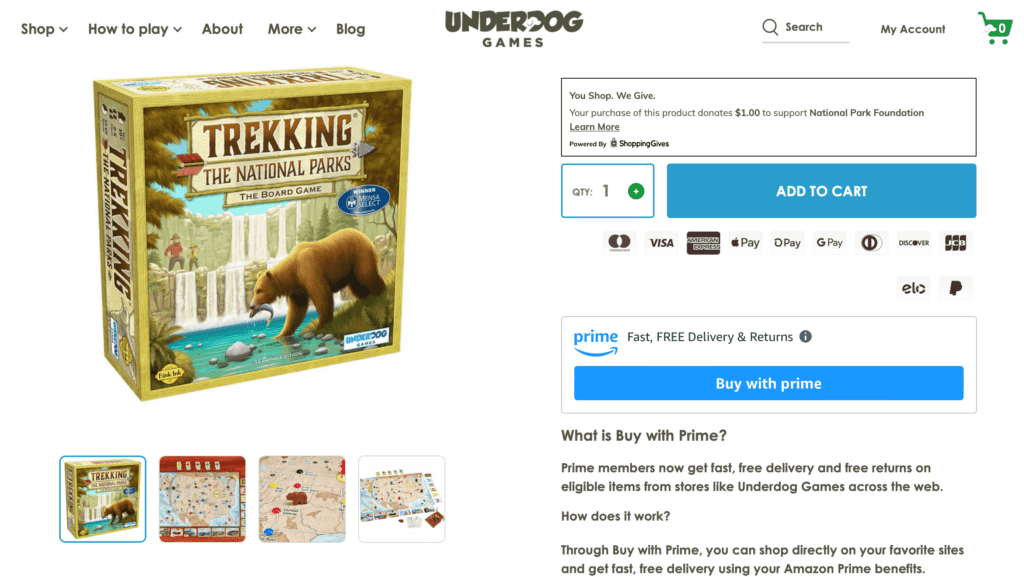
As Prime benefits are some of the main reasons why customers pick Amazon over other online retail platforms, offering Prime on an eCommerce site can be an effective way to increase conversion.
However, conversion is only half the battle. The other half is expanding your reach and driving new customers to your own DTC site, which many participating sellers are reportedly struggling with.
To help address this pain point, Amazon is introducing three (3) new marketing solutions that will enable DTC brands to attract and direct more shoppers to their own brand offerings.
So now, not only are non-AMZ sellers stealing your warehousing space, they’re also stealing your ad space.
However, it’s not all bad news. This actually could present some interesting opportunities for Amazon sellers to take Amazon traffic into their own websites and finally collect some of that customer information in a way that is TOS-compliant. Read on.
- Buy with Prime Pages and Sponsored Brands Ads
Amazon invites DTC sellers to showcase their products on Amazon with a Buy with Prime page within an Amazon brand storefront.
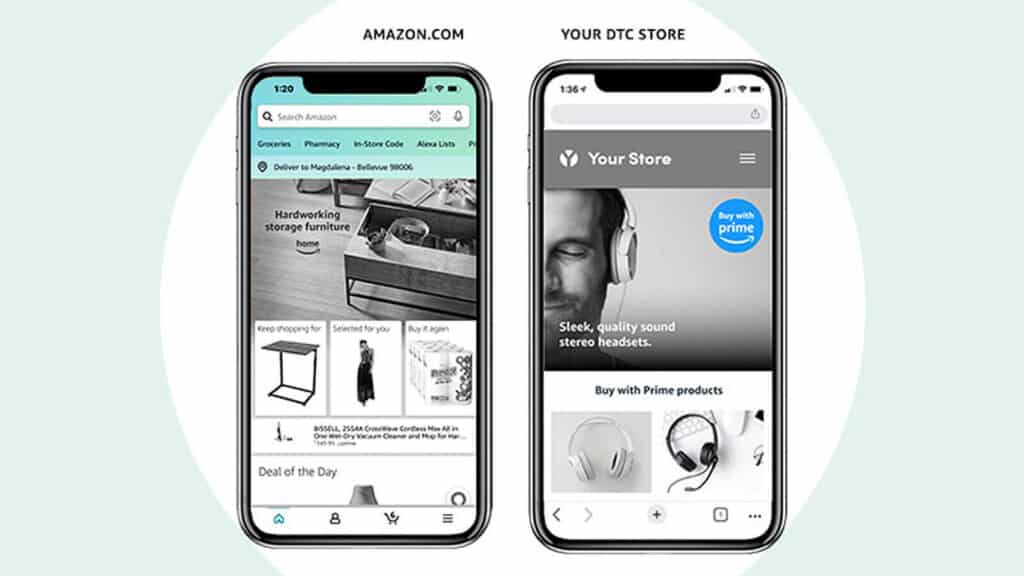
They would then create and launch Sponsored Brands ads to attract and drive Amazon shoppers to their products.
Sponsored Brands ads are customizable cost-per-click (CPC) ads that highlight a brand’s logo, headline, and products. They also appear in relevant parts within the Amazon search result pages to help shoppers discover your brand.
When a customer clicks on a Sponsored Brand ad, it directs them to a seller’s Buy with Prime page on Amazon.
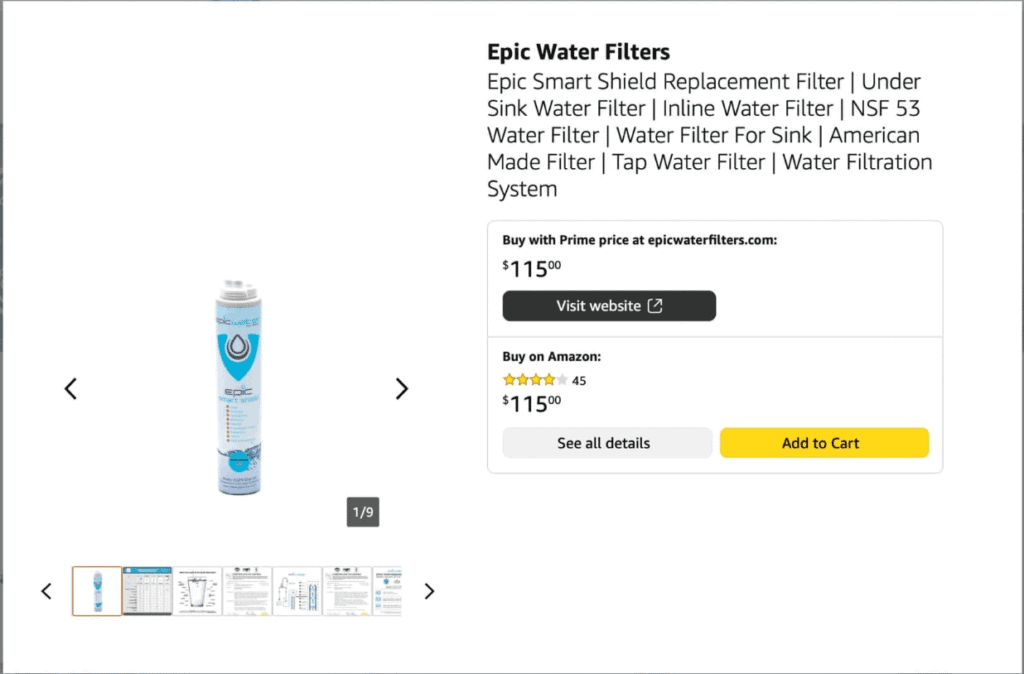
From there, the customer can preview the product offerings and decide whether to buy on Amazon or directly from the brand’s website via Buy with Prime.
However, as you can see, this process takes several clicks that may increase checkout friction in the customer’s path to purchase, which could then lead to cart abandonment.
But the good news is that both these DTC Sponsored Brands Ads and Buy with Prime pages are currently in beta. So, expect to see some changes to these features as they go through this testing period.
In a blog post, Marketplace Pulse Founder Juozas Kaziukėnas speculates that non-Amazon sellers might be able to advertise directly in Amazon search results in the future.
We could imagine a world where, when a customer types in “filtered water bottles,” and clicks on the first Sponsored Ad they see, for example, it would take them directly to the brand’s website instead of its Buy with Prime page on Amazon. Amazon would pocket the ad spend and the fulfillment fees and it is possible that they’d throw in an additional referral fee on top of the ad spend, knowing Amazon.
Removing as many steps as possible is key to improving customer experience and ecommerce sales.
2. Amazon-Funded Social Media Ads
With the advent of omnicommerce, people are no longer following a linear customer journey path. Many shoppers now go back and forth between your own website, social media ads, emails, and Amazon storefront to search for and buy products.
For this reason, Amazon is launching a co-branded Buy with Prime social media page and ads on Facebook and Instagram to help Buy with Prime sellers reach more customers at no extra cost. The ads from the Buy with Prime page will also feature specific sellers. This is a smart value add that Amazon is using to attract sellers to the program.
Suppose a customer sees a Buy with Prime ad featuring your brand on Facebook and clicks on that ad. In that case, they will be redirected to a Buy with Prime page where they can place an order.
3. Buy with Prime Marketing Toolkit
This toolkit provides you with a Buy with Prime badge that you can feature in your media assets, including product pages. It also allows you to market to Prime members on your own website.
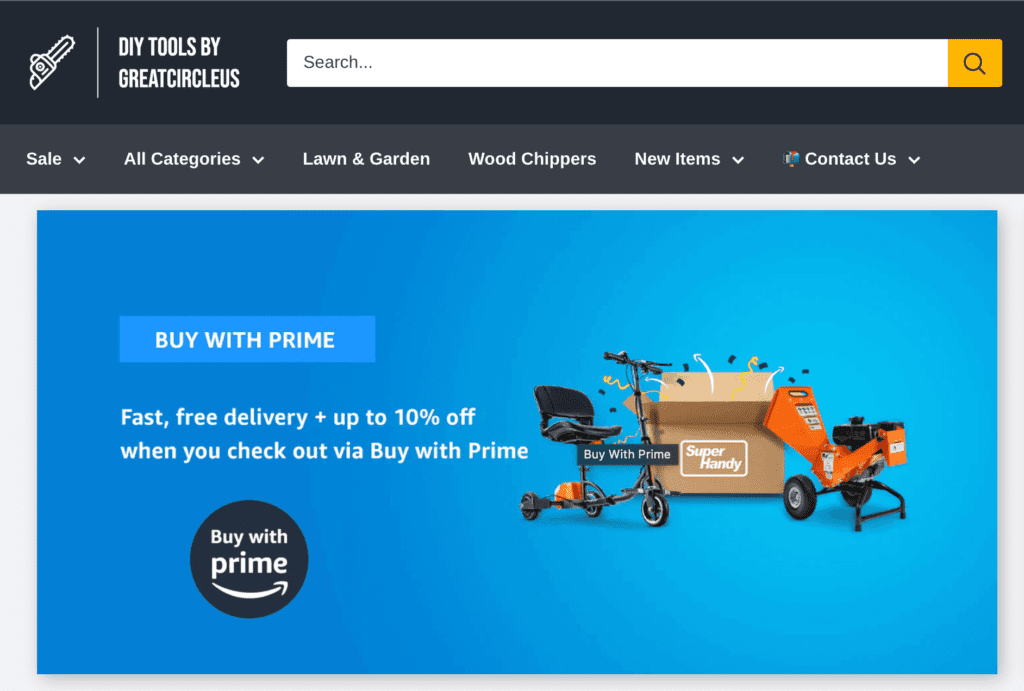
In Amazon’s official press statement, Patrick Sean Briseno, eCommerce and marketing manager at Great Circle Machinery shared:
“It’s tough to gain shoppers’ trust to make a purchase on our own website, but the Buy with Prime badge gives them peace of mind knowing their orders are fulfilled by Amazon with the Prime delivery promise.”
Related: Amazon Now Allowing Email Marketing Campaigns to Repeat Customers
Effective Way to Embrace Omnichannel Strategy
Many consumers rely on Amazon through all stages of their shopping journey. So, while you could come up with compelling offers to entice people to shop directly on your website, you could still face an uphill battle when competing with the retail giant.
But with Buy with Prime, along with borrowing trust, you can also use Amazon as an additional marketing and distribution channel to massively expand your reach and fulfill orders for Amazon shoppers, especially the company’s over 200 million Prime members. 🚀
But if you didn’t already consider it, this could also be a backdoor into Amazon getting all those non-Amazon, DTC sellers actually going toe-to-toe with you selling on Amazon itself. I’m sure, for Amazon, it’s just a waiting game. It’s all a bunch of these tiny yeses til Amazon’s got them going all in.
A word of caution for Shopify sellers: Shopify warns its merchants against Buy with Prime as using it violates the company’s Terms of Service. If you’re on Shopify, make sure you understand the risks of participating in the Buy with Program before getting involved. Read this article to learn more.
Related: Shopify Acquires Deliverr and Takes Aim at Amazon’s Buy with Prime
Need more information?
- Send Message: We typically reply within 2 hours during office hours.
- Schedule Demo: Dive deeper into the nuances of our software with Chelsea.
- Join Live Upcoming Webinar: New to Amazon inventory management? Learn three inventory techniques you can implement right away.
 Start Your Free Audit
Start Your Free Audit